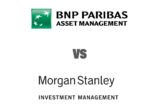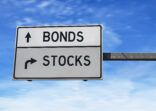
Convertible bonds are often touted as a suitable late cycle investment as they provide exposure to equity markets with downside protection from fixed income, although this is predicated on the belief that bonds and equities have a negative correlation, which famously was not the case last year.
Against this backdrop, FSA spoke with Arnaud Brillois, managing director at Lazard Asset Management, about what this means for the convertible bond market today, how Asia compares with the rest of the world and why the dislocation we are currently seeing is an anomaly.
What role do convertible bonds play within a portfolio?
Over the long run, convertible bonds have a return that is very, very close to equity returns, but with a volatility that is lower so the optimisation of a portfolio by adding convertible bonds is very high. We got those returns even though what the bond component of the convertible bond was offering for the last 18 months was very little in terms of performance.
There are very strong biases in the convertible bond world. You have many convertible bonds that are issued by small and mid-caps. Most of the convertible bonds are issued in the US. Technology, biotech and other growth sectors have historically been very active issuers.
The fact that these sectors are not well-represented in other fixed income asset classes means incorporating convertible bonds in a fixed income portfolio will provide some diversification at the sector level. In addition, the majority of issuers of convertible bonds only issue convertible bonds and not traditional bonds so the overlap between the convertible bond world in terms of issuers and the fixed income traditional world is very small.
Post Covid, there was a new group of issuers linked to tourism; 28.3% of the asset class now. It was a consequence of companies that decided to issue convertible bonds because they were strongly impacted by Covid or by sometimes other factors and it’s a way to say our equity is very low, very down, but in the future it’s going to rebound and we will pay back the convertible bond using new equity.
Are convertible bonds relevant when entry points to fixed income look attractive?
For a very long time when you were buying a convertible bond in a low rate environment, you were mostly buying the potential on the call option embedded in the bond related to the underlying equity. You were not thinking about the part that was coming from the bond component because in terms of the convertible bond, the coupon on convertible bonds is always smaller than the coupon of an equivalent straight bond. There is no free lunch.
As of today, the convertible bond asset class is in dislocation. It has been in dislocation for a long period of time. Normally, dislocation lasts for eight to nine months. In the current state, it has been lasting for more than a year or a year and a half. Convertible bonds currently offer both high equity capture and at the same time very attractive yields, especially in the technology sector. You have close to 50% of the technology sector that has a yield to maturity that is above 5%.
The combination of the two factors – the attractive yields and the high equity captures – make for a very good environment for convertible bonds to deliver a strong performance. The credit part is also very attractive compared to traditional fixed income. If you take credit spreads in high yield US convertible bonds, they’re currently wider than traditional bonds.
This higher credit spread is not a consequence of higher historical default rates. Convertible bonds are very pragmatic and when you have an issuer only issuing convertible bonds, it’s very easy for them to talk with the investors and restructure their bonds. You have a bigger spread on convertible bonds and you have a lower chance of defaults. It means in fact there is a very strong dislocation. It will disappear at some point. You cannot have such an inefficiency or anomaly in the market.
How were convertible bonds impacted by the collapse in negative correlation between equities and fixed income last year?
This environment has created very difficult conditions for the asset class. The equity component was falling because of weak equity markets and at the same time, the bond component was falling because of higher interest rates. It is very, very uncommon to have a combination of a sharp sell-off in equity markets and at the same time central banks that are accelerating their hiking cycle.
It is very important to note that the poor performance of the underlying equity of convertible bonds started before, not in 2022, but in 2021. It has been hidden by mega-cap growth, whereas mid-caps and small-caps already started to deteriorate in the middle of 2021. Even some of them started to deteriorate in February 2021.
After more than two years of very difficult market conditions for the issuance of convertible bonds, valuations are now at very attractive levels. if you compare convertible bonds with Russell Growth 2000, which is close to the issuance of convertible bonds, you will see we are in line because the Russell Growth has been deteriorating before.
How does Asia compare to the rest of the world for convertible bonds?
Asia ex-Japan represents 11.6% of the asset class; Japan is 3.6%. The majority of issuers are Chinese companies, either issuing in Hong Kong or in the US. From 2018 to 2021, we saw an acceleration of the volume of Chinese issuance, particularly from the consumer discretionary sector. In contrast, Japanese issuers have been greatly retreating from the asset class over the past 20 years.
Today, the Asian convertible bond market offers access to a variety of issuers and credit quality with some overweight on consumer discretionary and underweight on healthcare compared to the global asset class. We saw a slowdown in convertible bonds out of Asia because of political tensions between the US and China but little by little the Hong Kong market is coming back. We believe that is going to accelerate.
Generally, liquidity is thinner in Asia. When you want to buy for size, you have to split the order. You have to work your trading in a different way than when you are trading in a market like the US. We also use a third-party data provider, Jefferies which uses implied volatility to value convertible bonds. The market value of convertible bonds is below the fair value of convertible bonds, which is not normal.
If you look at Asia, the fair value of convertible bonds is a lot higher than the market value. What does it mean? It means that it is very cheap even if the liquidity is thinner. Asia is currently the most attractive market in terms of valuations in the convertible bond asset class.
Can you explain a bit more about the Lazard Convertible Global and Lazard Global Convertibles Recovery funds?
The global convertible bond fund that I’m managing today was launched in 1985. The fund invests in convertible bonds globally and in multiple currencies. We are not using any leverage. And we are using the most common benchmark. It is the one used by 84% of convertible bond funds. It is the Refinitiv Global Convertible Bond Focus.
We have a process that is focused on conviction management. We are selecting bonds that are not necessarily in the benchmark and we are offering very active management. We have a concentrated portfolio. We are diversified enough to avoid a big impact, but we are concentrated enough to produce some alpha. And we outperformed the market eight years out of the last nine.
Our difficult year was in 2022. We were too optimistic about inflation, believing that it was going to be a lot more temporary and we came back too early in terms of equity exposure in the portfolio. But with the rebound that we got in 2023 with the convictions in our portfolio, we have had a very strong performance.
We also have a specific recovery convertible bond fund that we launched in August 2020 because in the convertible bond world you always have some dislocation. Who is issuing convertible bonds? Growth companies that want to pay you back with new equity and companies that have been impacted strongly by some problems.
It was designed as an opportunistic fund. It has no benchmark and it aims to invest in dislocated convertible bonds. It’s not only Covid convertible bonds. You have other sectors over the years that have been strongly impacted by other specific sector problems. But the Covid crisis has created a favourable environment for launching this strategy. Originally, the fund was mainly invested in issuers affected by the Covid crisis – tourism and transportation.

















